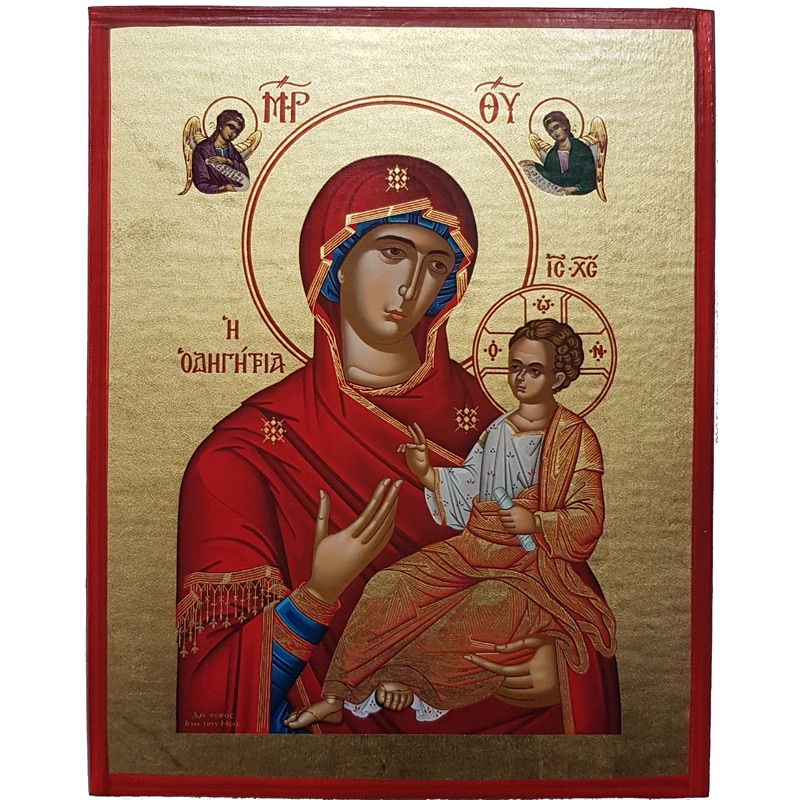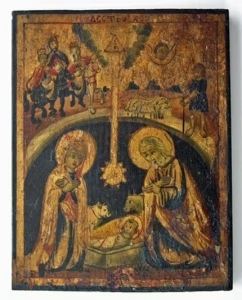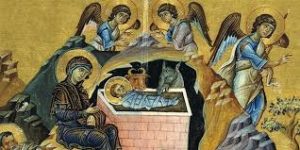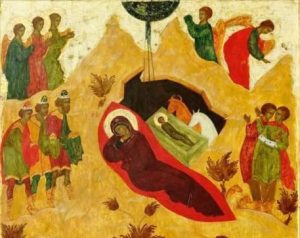The Mother of God: The Odigitria, The One Who Shows the Way

In Orthodox Christianity, few figures hold as central and revered a place as the Mother of God, the Theotokos. Among her many titles, one stands out for its profound significance and universal resonance: the Odigitria, or “She Who Shows the Way.” This title encapsulates her role not only in the life of Christ but also in the spiritual journey of every believer.
Historical Origins and Significance
The veneration of the Theotokos as the Odigitria dates back to the early centuries of Christianity. The term itself derives from Greek, with “hodos” meaning “way” or “path,” and “hegeisthai,” meaning “to lead.” The Odigitria icon, one of the most ancient and venerated representations of the Virgin Mary, typically depicts her holding the Christ Child, who in turn blesses the viewer with one hand while holding a scroll in the other. Mary’s other hand points towards Christ, directing all who gaze upon her to the Savior.
This iconographic representation is not merely a work of art but a theological statement. It underscores the belief that the Theotokos is the guide to Christ, the true path to salvation. In a world fraught with spiritual confusion and moral ambiguity, the Odigitria stands as a beacon of clarity and direction.
Theological Reflections
Theologically, the Mother of God as the Odigitria emphasizes her unique role in salvation history. As the one who bore God Incarnate, she is intimately connected with the mystery of the Incarnation, a central tenet of Orthodox faith. Her willingness to accept God’s will, as evidenced by her response to the Archangel Gabriel, “Behold the handmaid of the Lord; be it unto me according to thy word” (Luke 1:38), sets her as a model of obedience and faith.
The Odigitria also reflects the intercessory role of the Theotokos. As the first and foremost of the saints, she is believed to intercede continually for the faithful, guiding them toward a closer relationship with Christ. This intercession is beautifully captured in the liturgical life of the Church, particularly in hymns and prayers dedicated to her.
Spiritual and Devotional Practices
Devotion to the Theotokos as the Odigitria is deeply ingrained in the spiritual practices of Orthodox Christians. The faithful often turn to her in prayer, seeking her guidance and protection. Icons of the Odigitria are not only venerated in churches but also in homes, reminding believers of her ever-present guidance.
One of the most powerful expressions of this devotion is the Akathist Hymn, a profound and moving liturgical poem that extols the Theotokos for her role in the mystery of salvation and her unceasing intercession for humanity. The hymn vividly describes her as the “Guide to wisdom” and the “Pathway to the Kingdom,” reinforcing her role as the Odigitria.
Contemporary Relevance
In today’s world, the need for spiritual guidance is as pressing as ever. The figure of the Theotokos as the Odigitria offers timeless wisdom and direction. She invites all to turn their gaze to Christ, to find in Him the way, the truth, and the life. Her example of unwavering faith and obedience provides a roadmap for navigating the complexities and challenges of modern life.
Moreover, the Odigitria’s role as an intercessor offers comfort and hope. In times of personal or communal crisis, turning to the Mother of God can bring solace and assurance. Her maternal care and protection remind believers that they are not alone on their spiritual journey.
The Mother of God, as the Odigitria, occupies a unique and exalted place in Orthodox Christianity. Her role as the one who shows the way to Christ is a source of profound theological insight and spiritual comfort. Through her intercession, guidance, and example, she continues to lead the faithful toward the ultimate goal of union with God. As we navigate the spiritual landscape of our lives, may we always look to the Theotokos, the Odigitria, to show us the way to her Son, our Lord and Savior Jesus Christ.



